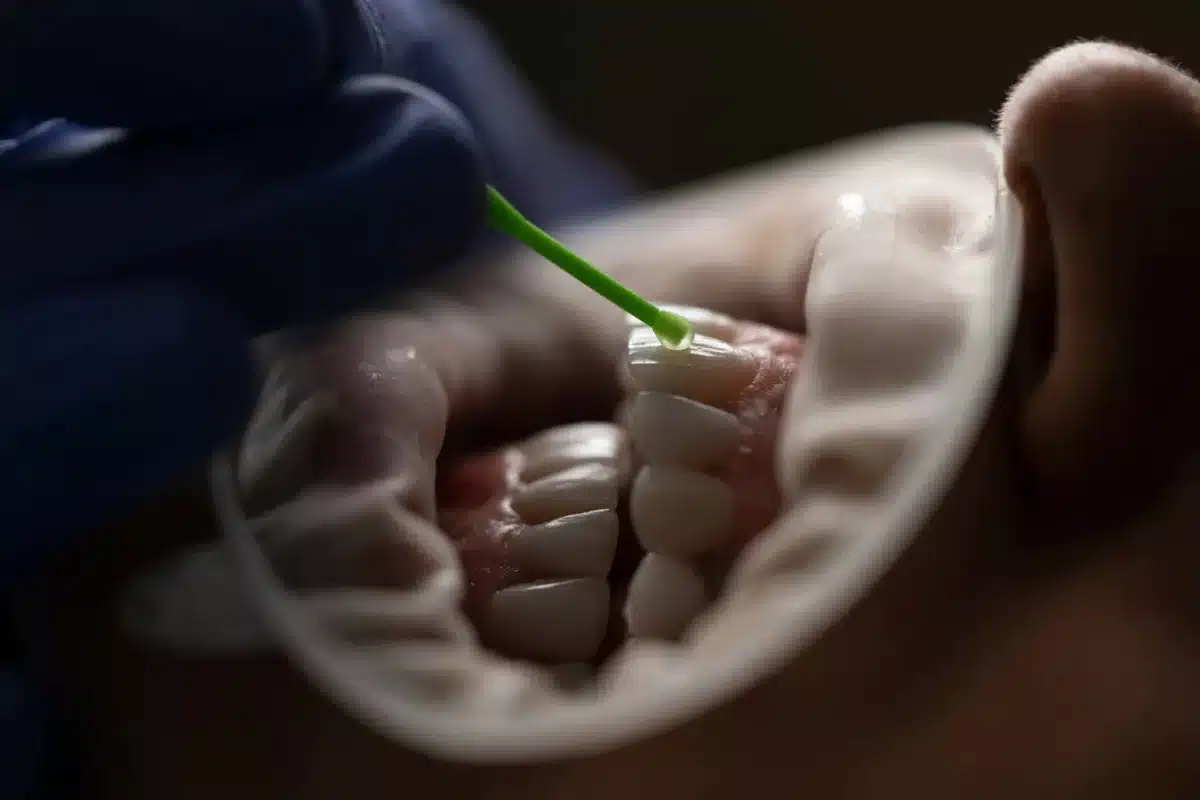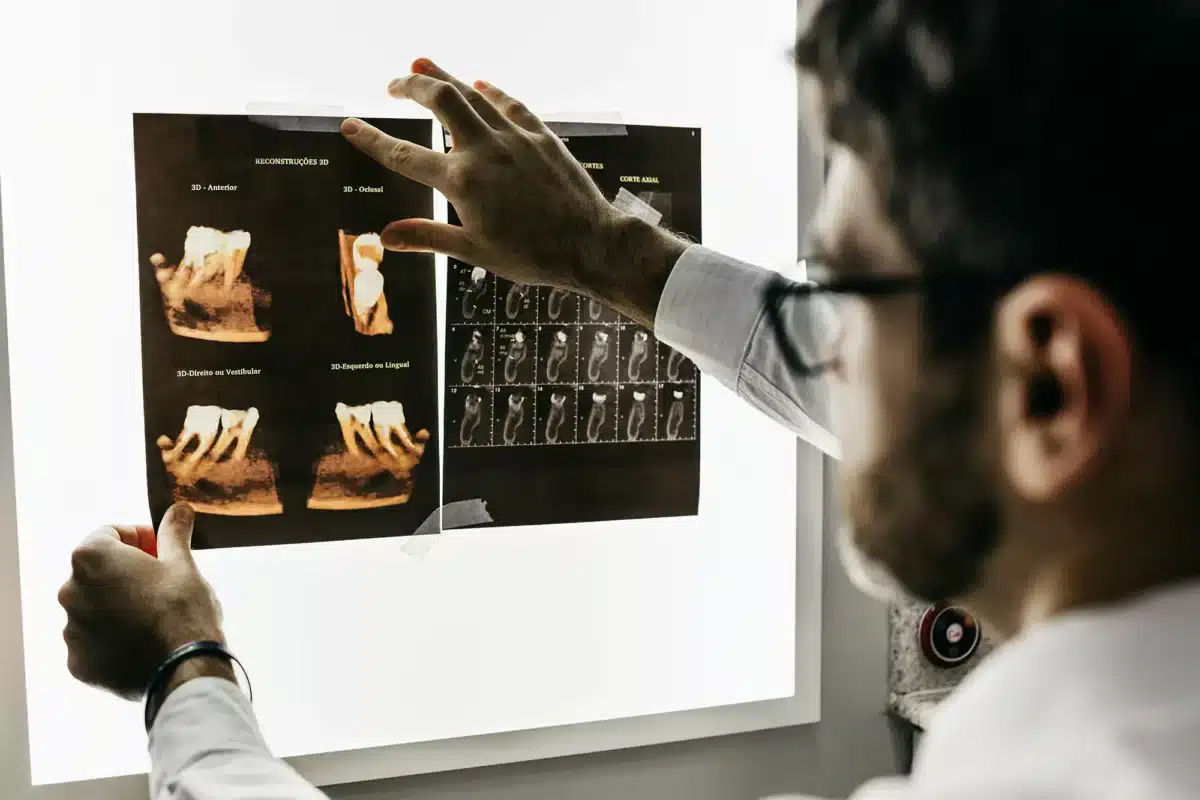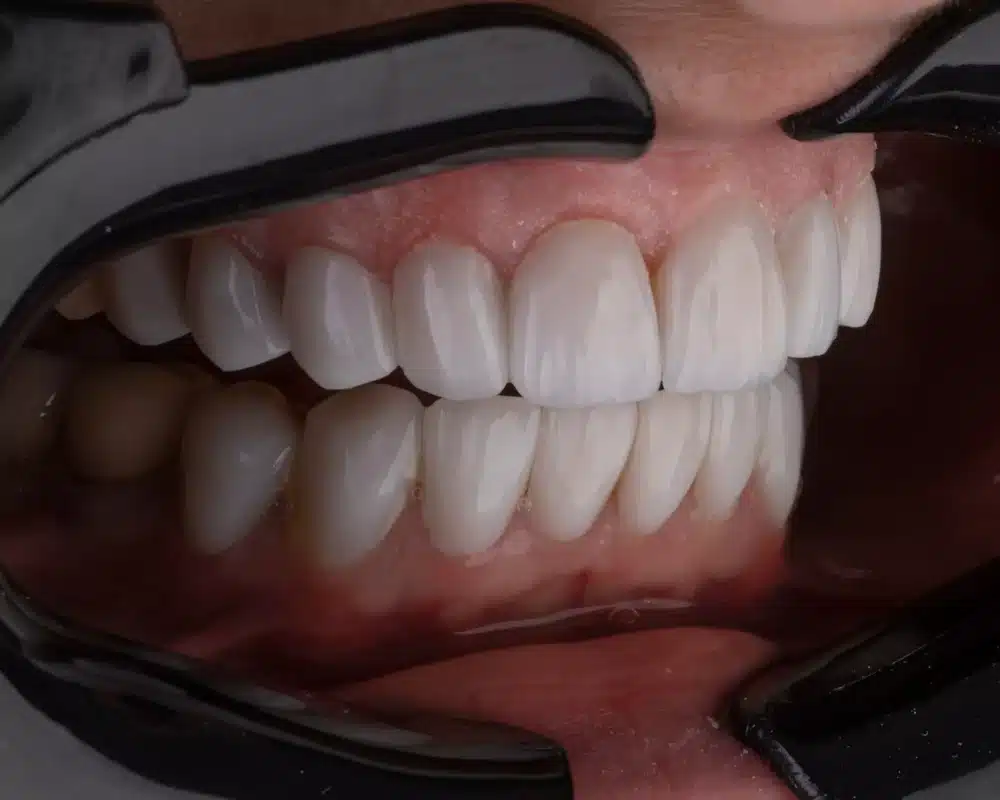Teeth Wear: Worn Teeth Treatment, Symptoms, and Causes
What Is Tooth Wear?
"the gradual loss of tooth enamel and structure"
Tooth wear is defined as the loss of tooth structure resulting from factors other than caries. Worn teeth are among common dental problems affecting people for centuries and may be characterized by rough edges on the teeth and worn surfaces.
What causes dental erosion?
Dental erosion, a form of tooth wear, is primarily caused by the chemical dissolution of tooth enamel and dentine by acids not derived from bacteria. These acids can originate from extrinsic sources, such as dietary acids present in foods and beverages like citrus fruits, soft drinks, and wine, or intrinsic sources, such as gastric acid in conditions like gastroesophageal reflux disease (GERD) or chronic vomiting, including that associated with eating disorders. Saliva plays a crucial protective role against erosion by neutralizing and buffering these acids, and a reduction in salivary flow or a change in its composition can exacerbate the risk. Environmental factors, such as exposure to chlorinated swimming pool water, can also contribute to dental erosion. The process is distinct from mechanical forms of tooth wear, such as attrition or abrasion and is not caused by bacterial action, as seen in tooth decay. Understanding these causes is critical for both prevention and management of dental erosion.
What causes tooth grinding?
Tooth grinding, clinically known as bruxism, is a condition often caused by a combination of physical, psychological, and genetic factors. Physically, misalignment of teeth (malocclusion) and an abnormal bite can lead to bruxism, as the body subconsciously attempts to adjust the teeth to a more comfortable position. Psychologically, stress and anxiety are significant contributors, with individuals often grinding their teeth in response to emotional tension, especially during sleep. Sleep disorders, such as sleep apnea, are also commonly associated with bruxism. Additionally, certain lifestyle habits, including smoking, heavy alcohol consumption, caffeine use, and specific medications, particularly antidepressants, have been linked to an increased risk of tooth grinding. Genetic predisposition plays a role, too, as bruxism tends to run in families. Understanding these multifactorial causes is crucial for effective management and treatment of bruxism.
What causes acid wear on teeth?
Acid wear on teeth, also known as dental erosion, is primarily caused by the exposure of teeth to acidic substances. These acids can originate from external dietary sources such as citrus fruits, carbonated beverages, and wine or from internal sources like gastric acid, which may come into contact with teeth due to conditions like gastroesophageal reflux disease (GERD) or recurrent vomiting, as seen in bulimia nervosa. The acid acts by dissolving the calcium and phosphate minerals in the tooth enamel, leading to its softening and eventual wear. This process can be exacerbated by certain lifestyle factors, such as poor oral hygiene, high frequency of acidic food or drink consumption, and inadequate salivary flow or composition, which normally helps to neutralize acids and remineralize enamel. Unlike mechanical forms of tooth wear, such as attrition from grinding, acid wear often presents as smooth, polished surfaces on the teeth and can lead to increased sensitivity, aesthetic changes, and, in severe cases, significant structural damage to the teeth.
Can brushing too hard cause tooth wear?
Brushing teeth too vigorously is a significant contributor to tooth wear, particularly in the form of dental abrasion. This type of wear occurs when the tooth’s hard tissues are mechanically worn down, not by chewing, but by external factors, in this case, the toothbrush. Overzealous brushing, especially with a hard-bristled toothbrush, can gradually erode enamel, the protective outer layer of teeth, exposing the softer dentin underneath. This exposure can result in increased tooth sensitivity and susceptibility to decay. Moreover, aggressive brushing can also harm the gum tissue, potentially leading to gum recession, another form of tooth wear. Using a soft-bristled toothbrush and employing gentle, circular motions while brushing is essential to avoid such adverse effects. This approach effectively cleans the teeth and minimises the risk of tooth wear and gum damage.
How does grinding affect tooth wear?
Tooth grinding, clinically known as bruxism, significantly contributes to tooth wear, specifically in the form of attrition. This condition, often occurring during sleep or in times of stress, involves the repetitive clenching and grinding of teeth. Such forceful contact results in the gradual but persistent wearing down of the tooth enamel, the protective outer layer of teeth. Over time, this leads to the exposure of the underlying dentin, which is softer and more susceptible to wear and decay. The implications of this enamel loss are multifaceted: it increases the risk of tooth sensitivity and decay, can lead to changes in the bite or occlusion, and may cause or exacerbate temporomandibular joint (TMJ) disorders. Moreover, bruxism-induced wear can alter the appearance of teeth, often leading to flattening of the biting surfaces and a shortened, aged appearance of the teeth. Therefore, identifying and managing bruxism is crucial in preventing excessive tooth wear and maintaining overall dental health.
What are the signs and symptoms of tooth wear?
Toothwear, a multifactorial condition affecting dental health, manifests through various signs and symptoms, crucial for early detection and management. The most common indicator is the gradual change in tooth appearance, where teeth may appear shorter, flatter, or more rounded. Enamel thinning is another key sign, often resulting in increased translucency, particularly at the biting edges of the front teeth. Patients frequently report increased sensitivity to hot, cold, or sweet stimuli as the protective enamel layer wears away, exposing the underlying dentin. In severe cases, cracks or fractures in the teeth may occur. Additionally, patients may experience changes in their bite, difficulty chewing, or jaw pain, particularly in cases where tooth wear is due to bruxism (tooth grinding). Aesthetic concerns are also prevalent, as tooth wear can lead to a more aged appearance of the smile.
What are the treatment options for tooth wear?
Treatment options for tooth wear are diverse and tailored to the severity and cause of the condition. In cases of mild wear, preventive approaches like fluoride toothpaste or varnishes and addressing dietary acids or habits contributing to wear, such as bruxism, are recommended. For moderate wear, restorative interventions may be necessary, including composite bonding, which involves applying resin to worn areas or inlays and onlays for more extensive damage. Severe wear often requires more comprehensive treatments like crowns or veneers to protect and rebuild the tooth structure. Additionally, if tooth wear is due to grinding (bruxism), a night guard may be prescribed to protect the teeth. It’s crucial to treat underlying causes simultaneously, such as managing acid reflux or modifying diet, to ensure the long-term effectiveness of these treatments. Regular dental check-ups are essential for monitoring and managing tooth wear effectively.
What are the best ways to prevent tooth erosion?
Preventing tooth erosion, a key concern in dental health, involves a multifaceted approach focusing on lifestyle modifications and proactive dental care. Firstly, dietary adjustments are crucial; limiting the consumption of acidic foods and beverages, such as citrus fruits, carbonated drinks, and wine, is essential, which can erode enamel. Rinsing the mouth with water after consuming acidic substances and waiting at least 30 minutes before brushing helps to neutralize acids and prevent abrasive damage to weakened enamel. Utilising toothpaste with fluoride strengthens tooth enamel, offering a protective barrier against erosion. Additionally, addressing medical conditions like gastroesophageal reflux disease (GERD) or disorders that involve frequent vomiting, which can expose teeth to stomach acids, is vital. Regular dental check-ups are essential for early detection and management of erosion. Protective measures like custom-made mouthguards can be beneficial for those who grind their teeth, a habit that exacerbates erosion. Educating patients about proper brushing techniques and soft-bristled toothbrushes can prevent mechanical wear contributing to erosion. Combining dietary management, appropriate oral hygiene practices, medical intervention when necessary, and regular dental consultations, this comprehensive approach represents the most effective strategy for preventing tooth erosion.
What are the common causes of dental abrasion?
Dental abrasion, a form of tooth wear, is primarily caused by mechanical actions other than chewing or biting. One of the most common causes is aggressive tooth brushing; specifically, using a hard-bristled toothbrush or applying excessive force can lead to the gradual erosion of enamel, particularly where the gums and teeth meet. Additionally, the habit of using teeth as tools to open or hold objects can contribute significantly to abrasion. Other factors include abrasive toothpaste, especially those designed for whitening or tartar control, which can wear away the tooth surface over time. Habits such as nail-biting or chewing on hard objects (like pens, ice, or hard candy) also contribute to this condition. In some cases, certain dental appliances, like poorly fitting braces or retainers, can cause abrasion.
What is tooth attrition and how does it differ from other types of tooth wear?
Tooth attrition is a specific form of tooth wear that results primarily from tooth-to-tooth contact, often seen in patients with bruxism (habitual grinding) or clenching habits. Unlike other forms of tooth wear, such as erosion or abrasion, attrition is characterized by the mechanical wearing down of the biting surfaces of the teeth. This is evidenced by the flattening of the cusps and incisal edges, and in severe cases, can lead to exposure of the dentin or even the pulp, leading to sensitivity and increased risk of dental caries. In contrast, erosion is the chemical dissolution of tooth enamel and dentin due to acids not derived from bacteria, commonly seen with excessive consumption of acidic foods or gastroesophageal reflux disease. On the other hand, Abrasion results from external mechanical processes, like aggressive brushing or toothpicks. Understanding these distinctions is crucial for accurate diagnosis and appropriate management of tooth wear.
What Is Normal Tooth Wear?
Is Tooth Wear Considered Normal?
As we age, we lose a certain level of our tooth surface, which is considered normal tooth wear and a normal physiological process.
The general wear and tear of the teeth can also be a natural result of the friction caused by chewing, biting, and some lifestyle factors.
Most people will usually lose about a millimetre of their tooth enamel (front teeth) after age 30. While tooth wear is typically considered a normal part of aging, a substantial loss of tooth structure is not normal. Severe tooth wear requires treatment because it may lead to other dental problems.

Types of Tooth Wear
Dental wear can be classified into three categories:
Dental Attrition: tooth wear caused by tooth-on-tooth contact
Attrition is the wear of tooth surfaces caused by tooth-to-tooth contact.
Bruxism or teeth grinding may eventually lead to dental attrition. This type of tooth wear caused by tooth grinding may affect facial appearance because of the loss of tooth structure. The condition may cause the back teeth to become flatter and the front teeth to become shorter.
Attrition can be considered the normal aging process, but since it may wear away the enamel layer and expose the dentine, it needs treatment.
Worn enamel may cause tooth sensitivity and must be addressed by a dentist. Exposed dentine can lead to sensitivity issues, pain, and discomfort. Seeking treatment for bruxism is necessary to prevent further damage to the tooth enamel.
Dental Abrasion: tooth wear caused by an abnormal mechanical process
Dental abrasion can result from friction due to an extrinsic agent, such as improper tooth brushing or using teeth as tools.
According to this dentist in Perth, people who tend to apply too much force while brushing their teeth or use hard-bristled toothbrushes can have an increased risk of tooth abrasion and a gradual loss of tooth enamel.
Brushing the teeth horizontally may also lead to tooth abrasion.
The prolonged use of tongue jewellery and biting on hard objects such as nails, hair clips, or pens may also lead to this type of tooth structure loss.
Dental Erosion: tooth wear caused by an increased level of acid in the mouth
Tooth erosion is another type of tooth wear that can occur when teeth are exposed to too many acidic foods and drinks too often.
Some medical conditions like gastroesophageal reflux (acid reflux) diseases may also elevate the risk of tooth erosion. Enamel may erode because the stomach acid comes up to the mouth and wears the enamel.
The enamel layer is susceptible to wear due to being exposed to acidic food or drink and stomach acid. Acids wear away the enamel and can expose the underneath layer, dentine.
Since dentine is yellow, worn teeth may develop more of a yellow tinge.
Increased tooth sensitivity is a common symptom. You may notice your teeth have become more sensitive to cold foods and drinks or even sugary foods. Tooth discolouration may also indicate dental erosion.
Excessive consumption of fruit juices, energy drinks, sports drinks, sodas, soft drinks, carbonated drinks, and citrus fruits can increase the risk of tooth surface loss.
Symptoms of Worn Teeth
Worn teeth may have the following symptoms:
- Tooth Sensitivity
- Chipped or cracked teeth
- Translucent or shiny teeth
- Tooth pain

Dental Problems Caused by Worn Teeth
What can happen if Tooth Wear is not addressed?
If “tooth wear” advances, it may lead to a very painful condition called pulpitis, an inflammation of the pulp.
If tooth wear is left untreated, it may cause biting and chewing difficulties for the person.
Tooth wear requires treatment if it’s not to turn into other dental issues.
Sensitive teeth, sore gums, and pain in the jaw may also be other consequences of unaddressed tooth wear.
Prevent Excessive Tooth Wear
Follow these tips to prevent excessive wear of the tooth structure:
- Avoid overindulgence in acidic foods and drinks. Rinse your mouth after you drink such beverages.
- Seek treatment for acid reflux to stop stomach acid from damaging your teeth. Ensure you wash your mouth with water if you throw up, and avoid brushing your teeth right after vomiting.
- Avoid using your teeth to open bags or remove bottle caps.
- Tooth grinding may result from stress or anxiety. You can try stress-relieving activities such as meditation or yoga to reduce stress or tension and prevent grinding your teeth.
- Apply the correct technique of brushing; avoid brushing your teeth horizontally.
- Use gentle circular motions to remove plaque and food particles from your teeth.
- Switch to a soft-bristled toothbrush.
- Make sure your toothpaste is not abrasive.
- Arrange regular dental visits with your dentist to ensure proper oral health.
Worn Teeth Treatment Options
Can Worn Teeth Be Repaired?
Identifying the root cause of tooth wear is essential for treatment planning.

Dental Bonding
Dental bonding is a cosmetic dental treatment used to improve the appearance of chipped or damaged teeth, repair worn-down edges of a tooth, or close gaps between the teeth.
Your Brisbane dentist may suggest dental bonding to address mild cases of tooth wear and improve the appearance of your teeth. They will apply a composite resin to the surface of your worn teeth and, after trimming, shaping, and polishing it, will harden the resin material using ultraviolet light.
Dental Crowns
Dental crowns are also commonly used to improve the appearance of worn teeth. Dental crowns are custom-made restorations that fully cover the visible portion of a tooth. In cases of tooth wear, which may result from bruxism (teeth grinding), acid erosion, or attrition, crowns play a crucial role in restoring function and aesthetics. They are particularly beneficial in severe cases where the enamel is extensively worn, leading to sensitivity or an increased risk of tooth decay. Encasing the worn tooth, a crown restores its original shape and size, offering protection against further wear and tear. The process involves reducing the size of the affected tooth to accommodate the crown, followed by an impression to design a custom-fit crown, usually made of durable materials like porcelain or zirconia. This ensures the crown can withstand the forces of chewing and mimics the natural appearance of teeth. Importantly, crowns also help in redistributing the forces during biting, which is vital in cases where tooth wear has altered the bite dynamics. It is crucial, however, for patients to address underlying causes of wear, such as bruxism, to ensure the longevity of the crowns and overall oral health. Regular dental visits and a comprehensive care approach are essential in managing tooth wear effectively with crowns.
Dental Veneers
Dental veneers offer excellent aesthetic outcomes by covering the lost tooth structure caused by tooth wear. These wafer-thin shells can change the colour, shape, size, or length of the front surface of a tooth. Dental veneers will be attached to the front of worn or discoloured teeth using a dental adhesive to restore your teeth’ aesthetic look and feel. Dental veneers, which are thin shells of porcelain or composite material, are meticulously crafted to fit over the front surface of teeth. They serve as a highly effective solution for tooth wear, primarily because they provide a protective layer, reducing further abrasion or erosion of the natural tooth structure. This application is particularly beneficial in cases of enamel erosion due to acidic dietary habits or bruxism (teeth grinding), as veneers can restore the original appearance and function of the teeth. Additionally, veneers are colour-matched to the surrounding teeth, offering an aesthetically pleasing and natural look. Applying veneers involves minimal tooth preparation, where a small amount of the tooth surface is altered to ensure a perfect fit, and then the veneers are bonded to the teeth. This procedure is typically irreversible, emphasizing the importance of a comprehensive dental evaluation and a tailored treatment plan. The longevity and success of dental veneers largely depend on good oral hygiene practices and regular dental check-ups.




































